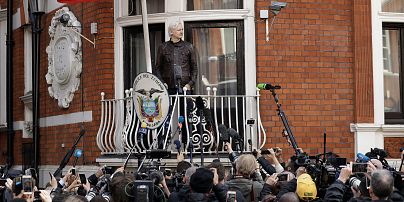Assange's complicated, almost decade long case came to a turning point today, when he was arrested in London as the U.S. seeks his extradition
Wikileaks founder Julian Assange was arrested in London Thursday on behalf of the U.S.
The arrest comes after the Ecuadorian government, which had been sheltering Assange in their British embassy for almost seven years, withdrew the asylum they granted him in 2012.
Wanted by British police for charges that stretch back nearly a decade, Assange skipped bail in 2012 while Swedenwas investigating him for sexual assault and rape charges. Sweden dropped the charges in 2017.
The U.S. Department of Justice has charged Assange with computer hacking.
Below is a timeline of events that led to Assange's Thursday arrest, according to NBC News reporting and Swedish prosecutors:
April 2010: Wikileaks releases a video provided to them by Chelsea Manning, which shows a 2007 U.S. airstrike that killed more than 10 Iraqis and two journalists.
May 2010: Chelsea Manning is arrested for leaking information to Wikileaks.
August 2010: Swedish prosecutor orders the arrest of Assange over suspected charges of rape and molestation.
December 2010: After prosecutors in Sweden issue an international warrant for his arrest in November, Assange is arrested by British police and the Court decides that he should be granted bail.
November 2011: Assange's appeal to overturn his extradition to Sweden is dismissed.
August 2012: Assange is granted asylum at the Ecuadorian embassy in London. Assange speaks from the balcony outside the embassy, his first public appearance since seeking asylum two months earlier.
July 2014: Stockholm District Court decides that Julian Assange should remain detained, after Assange request for his detention order to be reviewed.
August 2014: Assange promises he will leave the embassy "soon."
November 2016: Assange is questioned in the Ecuadorian embassy over sexual assault charges.
April 2017: Then-Attorney General Jeff Sessions says arrested Assange is a "priority" for the U.S.
May 2017: Sweden drops charges against Assange, who remains in the embassy.
Feb 2018: Assange loses bid to get British arrest warrant dropped.
March 2018: Ecuador cuts off Assange'scommunication, saying he is not permitted to send messages that could interfere with the country's foreign relations.
October 2018: Assange sues Ecuador over his new asylum terms that require him to pay for his expenses and clean up after his cat.
April 2019: Assange is arrested in London.












